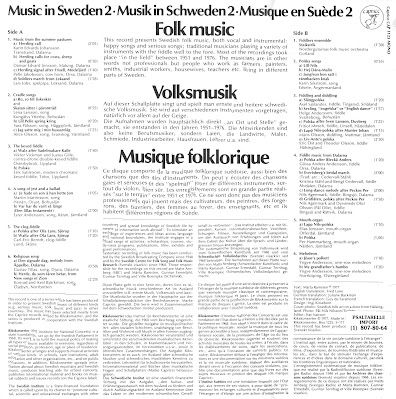УКРАИНСКИЕ ПЕСНИ В ИСПОЛНЕНИЙ Б. ГМЫРИ
UKRAINIAN SONGS SUNG BY B. GMYRIA
Melodiya, 1962, D 005254-55
These two albums are copies of discs I borrowed from a Soviet cultural center in Paris around 1986-87. I didn't think of copying covers then; the pictures here are on Discogs.
Boris Gmiria (1903-1969) was a Ukrainian opera singer in the ''singing bass'' register. But he was also known for his rendition of Ukrainian folk songs with folk instrument orchestras or piano accompaniment. He studied at the same time civil engineering and classical singing at the Kharkov Conservatory, graduating in each field in 1935 and 1939 respectively. His father died during the great famine of 1932-33. Because of his participation in musical life during the German occupation in Poltava he was harassed in the opera house and was not allowed to travel abroad. Nevertheless, he was awarded the title of People's Artist of the USSR in 1951. Unesco nicknamed him "Boris the Great" because of the power and depth of his voice, natural and without effects.
He is accompanied here by the Ossipov Orchestra conducted by V. Smirnov.
A1 Ой гук, мати, гук | |||||||||||||||
A2 Така її доля | |||||||||||||||
B1 Ой із-за гори та буйний вітер | |||||||||||||||
B2 Ой дівчина горлица B3 Задумав дідочок | |||||||||||||||
Another 10'' album by Gmiria whose date of publication is unknown. Here he's accompanied by a small band of banduras under the direction of A. Minkovkii. The lyrics of the first song are the work of the greatest Ukrainian poet Taras Shevchenko.
| A1 Думи Моі |
A2 Iхав Козак На Війноньку
A3 Ой Чото Ти, Дубе
B1 Ой Зійди, Зійди
B2 Чорніі Брови
B3 Дивлюсь Я На Небо
Lyrics By – М. Петренко
Music By – В. Заремба
I don't know how Gmiria would have reacted to the Russian aggression against Ukraine but I think he would have been overwhelmed with sadness; for the moment let's listen to this incomparable artist while waiting for the end of this war and possibly the victory of Ukraine.




























